Bulbs
Flower Basics
Flower Beds & Specialty Gardens
Flower Garden
Garden Furniture
Garden Gnomes
Garden Seeds
Garden Sheds
Garden Statues
Garden Tools & Supplies
Gardening Basics
Green & Organic
Groundcovers & Vines
Growing Annuals
Growing Basil
Growing Beans
Growing Berries
Growing Blueberries
Growing Cactus
Growing Corn
Growing Cotton
Growing Edibles
Growing Flowers
Growing Garlic
Growing Grapes
Growing Grass
Growing Herbs
Growing Jasmine
Growing Mint
Growing Mushrooms
Orchids
Growing Peanuts
Growing Perennials
Growing Plants
Growing Rosemary
Growing Roses
Growing Strawberries
Growing Sunflowers
Growing Thyme
Growing Tomatoes
Growing Tulips
Growing Vegetables
Herb Basics
Herb Garden
Indoor Growing
Landscaping Basics
Landscaping Patios
Landscaping Plants
Landscaping Shrubs
Landscaping Trees
Landscaping Walks & Pathways
Lawn Basics
Lawn Maintenance
Lawn Mowers
Lawn Ornaments
Lawn Planting
Lawn Tools
Outdoor Growing
Overall Landscape Planning
Pests, Weeds & Problems
Plant Basics
Rock Garden
Rose Garden
Shrubs
Soil
Specialty Gardens
Trees
Vegetable Garden
Yard Maintenance
How to Make an Instant Bonsai Tree
How to Make an Instant Bonsai Tree. Bonsai is the ancient Japanese garden art of training miniature trees. Here's a quick and easy way to create miniatures that have some of the character of true bonsai without the painstaking demands.
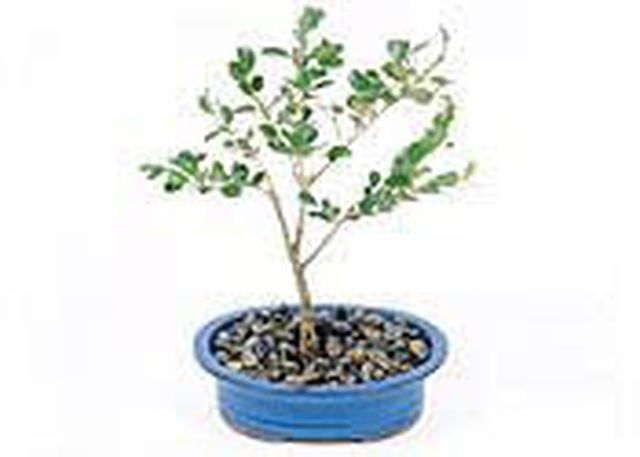
Bonsai is the ancient Japanese garden art of training miniature trees. Here's a quick and easy way to create miniatures that have some of the character of true bonsai without the painstaking demands.
Things You'll Need
1-gallon Shrubs
Aquarium Gravel
Bypass Pruners
Cottonseed Meal
Fish Emulsions
Potting Soil
Shallow Planting Containers
Window Screens
Select a tree. Start with common garden plants such as azalea, boxwood, camellia, cotoneaster, gardenia, hibiscus, holly, juniper, pyracantha and rhaphiolepis. Look for 1-gallon-sized shrubs with branches that either grow upward or hang facing down - whichever you prefer.
Using bypass pruners, make an initial pruning of the plant while it's in the original nursery container. Find its central trunk and remove enough growth until you plainly see the structure of the front - the side that will be displayed.
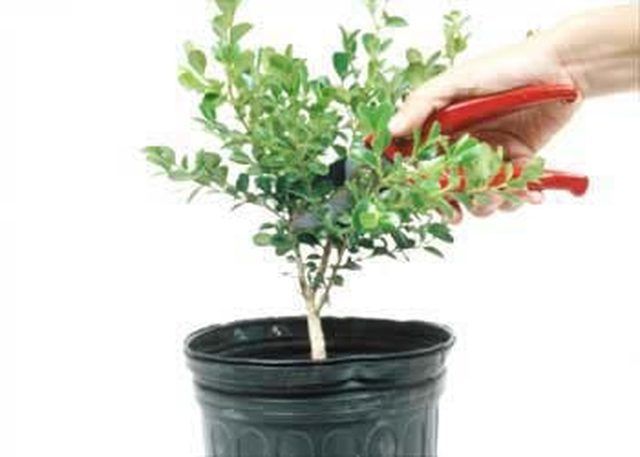
Remove the plant from its container and place the root ball in a bucket of water. This will make it easier to reduce the soil around the roots for fitting into a bonsai container.
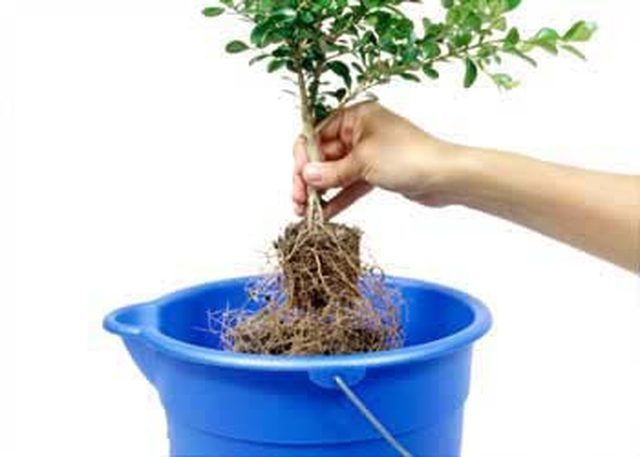
Remove as much of the soil around the root ball as possible to fit the plant into a shallow decorative container.
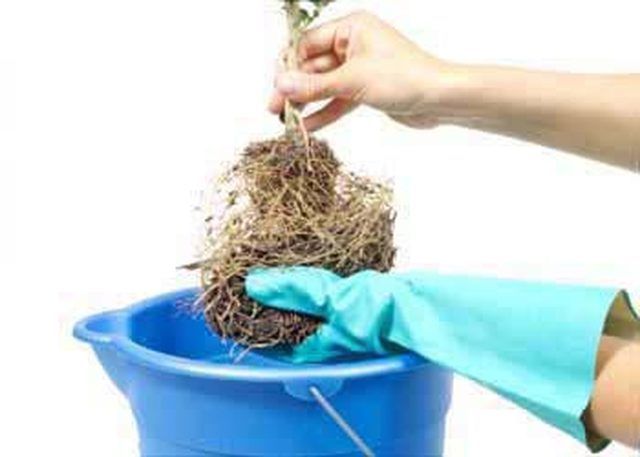
Trim the roots until they are reduced to 2/3 of their original size. You will have a shallow root ball when you are finished pruning.
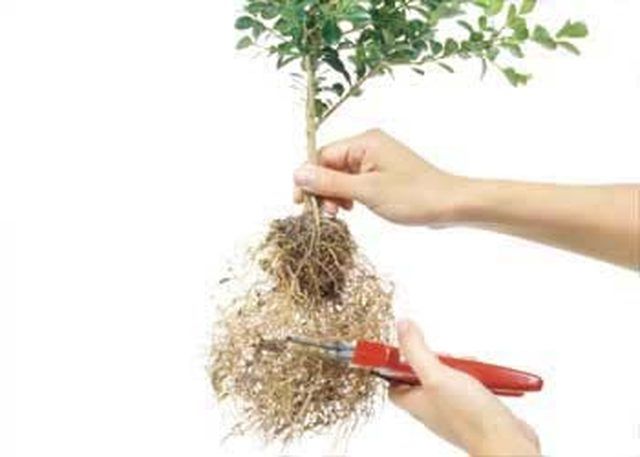
Place a piece of plastic window screen over the container's drain holes to prevent the soil mix from washing out as you water. The screen will also prevent insects from entering through the holes.
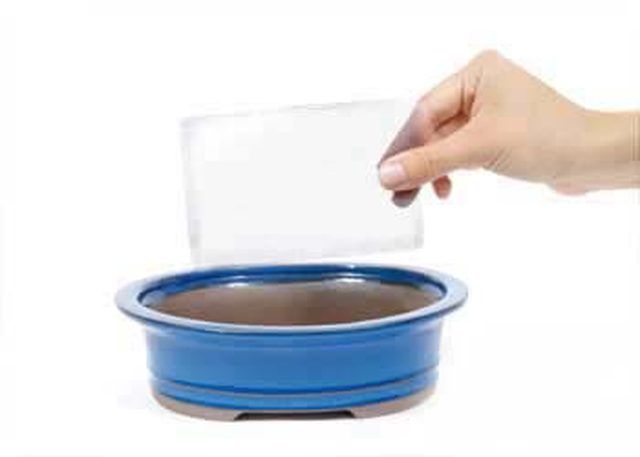
Add a 1-inch layer of potting soil mix to the bottom of the container.
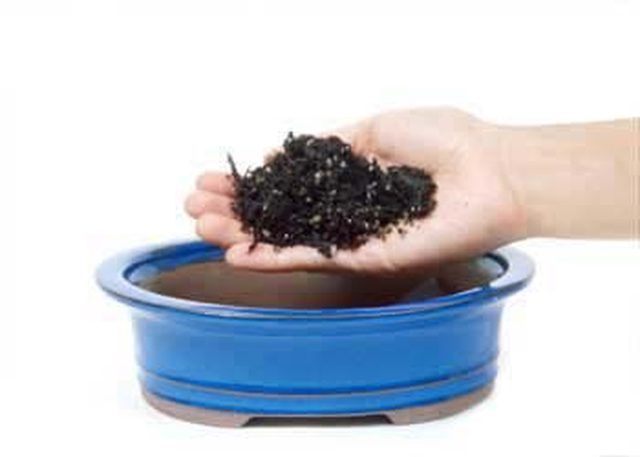
Place the plant in the container, spread the roots out over the layer of soil, and cover them with more soil. Make sure you leave at least 1 inch of space below the rim of the container so you can water.
Finish pruning the remaining foliage. Trim away stems and branches in such a way that the remaining growth has the branch structure of a tree. Keep in mind that once you cut something off, you can't put it back.
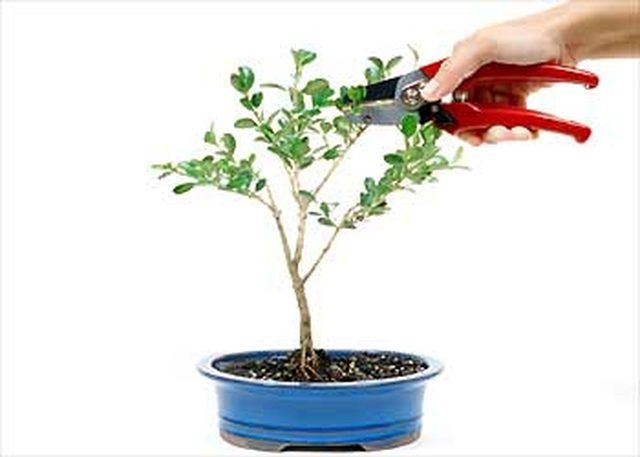
Water the tree well to soak the soil thoroughly.
Cover the surface of the soil with aquarium gravel for a finished appearance.
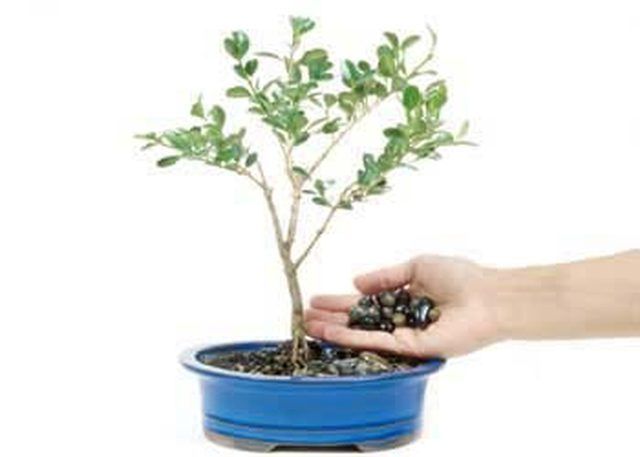
Feed with small amounts of fertilizer at frequent intervals, or choose a slow-release fertilizer. Fish emulsion or cottonseed meal are recommended sources of nutrients.
Tips & Warnings
Display your bonsai tree in a protected outdoor location that receives morning sun.
Remove about the same proportion of foliage as roots to keep the plant in balance.